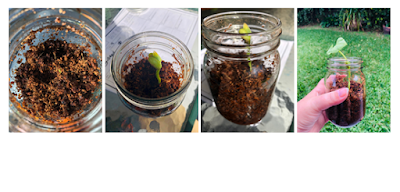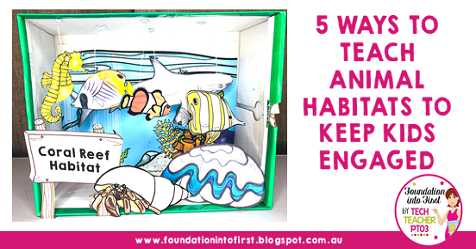Studying plant life cycles is one of those lessons that students can get some great hands-on real-world life-experience from. This is where you see learning in action!
You can do the plant life cycle activities whenever you want in the school year but it does work better in spring or autumn (when it's not too hot or too cold).
What you will need:
- seeds (I have found beans the best option as their seeds are big and don't get dropped/lost on the floor as easily and they do grow well under most conditions)
- Soil
- A container of some kind
- Water
- A sunny place where students can place them each day or a window sill that catches sunlight
- Count down to see germination chart
- Recording sheet
I got these little jars from Kmart. They come with a lid you can screw down to keep the moisture in (creating a temporary terrarium for the seed).
I also love that they come with a blackboard lid so you can write each student's name on the top of the jar (comes with chalk as well!). The lid kept the frost out and the moisture in but soon the plant outgrew the top of the chair so we had to remove the lid altogether eventually (so put an additional label on that jar with the child's name on).
Get the soil ready and soak it with some water (warm water if you're in Autumn so this can start the germination process a bit quicker). Then place the seed inside (one per jar).
Get students to cover the seed. Screw the lid on and then write the process they took on the recording sheet.
Keep coming back to the recording sheet each day and counting down the days to germination (this will help impatient kids to pace themselves while they wait).
Soon (for us it was around the 9th day) we saw the first shoots appear from the soil. It's important to explain to students what is happening under the soil prior to the first shoots popping out of the soil.
Don't forget to keep the countdown going till the plant has fully emerged from the soil.
Remember to water them a little each day and to record the features of the plant in the seed diary.
It won't be long till the seed is fully grown.
Then what? Well, students can take the seeds home and plant them in their garden (you could rehome them in a plastic container if you want to keep the glass jars to use again).
You can get all the printables for the plant life cycle in my TpT store here or on my website here.
If you have any tips or hints to share about planting seeds in your classroom, please leave them in the comments below.























